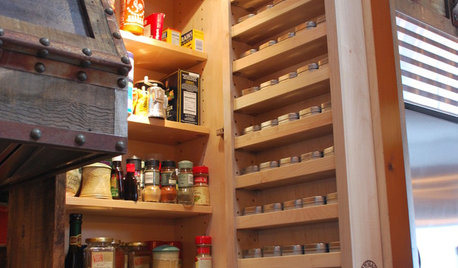Garlic problem: stinky black rot, white worms
elisa_z5
10 years ago
Related Stories

HOUSEKEEPINGHow to Fix a Stinky Garbage Disposal
No plumber’s fee or even a trip to the hardware store is required with these easy solutions
Full Story
FEEL-GOOD HOME21 Ways to Waste Less at Home
Whether it's herbs rotting in the fridge or clothes that never get worn, most of us waste too much. Here are ways to make a change
Full Story
TILETop Tile Trends From the Coverings 2013 Show — the Wood Look
Get the beauty of wood while waving off potential splinters, rotting and long searches, thanks to eye-fooling ceramic and porcelain tiles
Full Story
EDIBLE GARDENSSummer Crop: How to Grow Blueberries
Plant blueberries in spring or fall for garden beauty through three seasons — and a sweet superfood in summer
Full Story
GARDENING GUIDES11 Favorite Edibles for Your Cool-Season Garden
Plant crunchy carrots, crisp radishes, tender peas and other vegetables for fall and spring harvests
Full Story
GARDENING GUIDESGet on a Composting Kick (Hello, Free Fertilizer!)
Quit shelling out for pricey substitutes that aren’t even as good. Here’s how to give your soil the best while lightening your trash load
Full Story
EDIBLE GARDENSSummer Crops: How to Grow Tomatoes
Plant tomato seedlings in spring for one of the best tastes of summer, fresh from your backyard
Full Story
KITCHEN DESIGN7 Steps to Pantry Perfection
Learn from one homeowner’s plan to reorganize her pantry for real life
Full Story
MOST POPULARHow to Get Rid of Those Pesky Summer Fruit Flies
Learn what fruit flies are, how to prevent them and how to get rid of them in your home
Full StoryMore Discussions








planatus
theforgottenone1013 (SE MI zone 5b/6a)
Related Professionals
Birmingham Landscape Architects & Landscape Designers · Camas Landscape Architects & Landscape Designers · Fort Lee Landscape Architects & Landscape Designers · Tempe Landscape Contractors · Cornelius Landscape Contractors · Fair Lawn Landscape Contractors · Inglewood Landscape Contractors · Kailua Landscape Contractors · Olympia Landscape Contractors · Paramus Landscape Contractors · Pleasant Prairie Landscape Contractors · San Benito Landscape Contractors · Streamwood Landscape Contractors · Shenandoah Landscape Contractors · Brea Driveway Installation & Maintenancesunnibel7 Md 7
elisa_z5Original Author
sunnibel7 Md 7